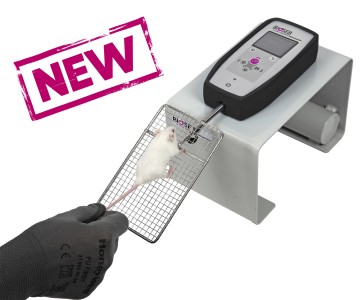Authors
SJ Overby, E Cerro-Herreros, I Gonz‡lez-Mart’nez et al
Lab
University Institute of Biotechnology and Biomedicine (BIOTECMED), Universidad de Valencia, Burjassot, Spain
Journal
Molecular Therapy Nucleic Acids
Abstract
Myotonic dystrophy type 1 is a debilitating neuromuscular dis[1]ease causing muscle weakness, myotonia, and cardiac dysfunction. The phenotypes are caused by muscleblind-like (MBNL) protein sequestration by toxic RNA in the DM1 protein kinase (DMPK) gene. DM1 patients exhibit a pathogenic number of repetitions in DMPK, which leads to downstream symptoms. Another disease characteristic is altered microRNA (miRNA) expression. It was previously shown that miR-23b regulates the translation of MBNL1 into protein. Antisense oligonucleotide (AON) treatment targeting this miRNA can improve disease symptoms. Here, we present a refinement of this strategy targeting a miR-23b binding site on the MBNL1 3_ UTR in DM1 model cells and mice by using AONs called blockmiRs. BlockmiRs linked to novel cell-penetrating peptide chemistry showed an increase in MBNL1 protein in DM1 model cells and HSALR mice. They also showed an increase in muscle strength and significant rescue of downstream splicing and histological phenotypes in mice without disturbing the endogenous levels of other miR-23b target transcripts.
BIOSEB Instruments Used
Grip strength test (BIO-GS3)
Source :

 Douleur - Allodynie/Hyperalgésie Thermique
Douleur - Allodynie/Hyperalgésie Thermique Douleur - Spontanée - Déficit de Posture
Douleur - Spontanée - Déficit de Posture Douleur - Allodynie/Hyperalgésie Mécanique
Douleur - Allodynie/Hyperalgésie Mécanique Apprentissage/Mémoire - Attention - Addiction
Apprentissage/Mémoire - Attention - Addiction Physiologie & Recherche Respiratoire
Physiologie & Recherche Respiratoire




































 Douleur
Douleur Système Nerveux Central (SNC)
Système Nerveux Central (SNC)  Neurodégénérescence
Neurodégénérescence Système sensoriel
Système sensoriel Système moteur
Système moteur Troubles de l'humeur
Troubles de l'humeur Autres pathologies
Autres pathologies Système musculaire
Système musculaire Articulations
Articulations Métabolisme
Métabolisme Thématiques transversales
Thématiques transversales Congrès & Meetings
Congrès & Meetings 